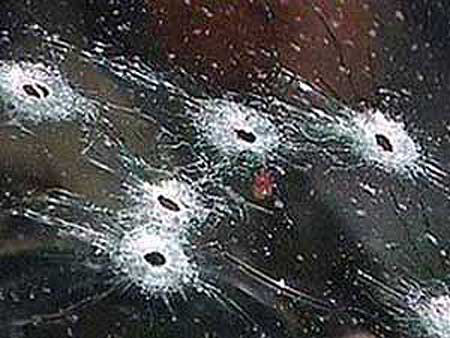
Dagestan’s Conflict Grinds On
Publication: Eurasia Daily Monitor Volume: 10 Issue: 48
By:

On March 9, four people were killed in three different parts of Dagestan. One incident took place in Khasavyurt district, which is predominantly populated by Chechens, Avars and Kumyks. Another incident happened in the town of Izberbash south of Makhachkala, which is mostly populated by Dargins. The third incident took place in the village of Kurakh in southern Dagestan, which has a majority Lezgin population. The four victims had diverse social backgrounds: the man killed in Izerbash was a federal judge, while a school teacher was killed in Kurakh and two young people suspected of being members of the insurgency were killed in Khasavyurt district. Despite this diversity, all three episodes of violence are connected by the political instability of Dagestani society.
The murder of the federal judge, Akhmed Radzhapov, was especially noteworthy. Radzhapov had served as a judge since August 2003. On the evening of March 9, three unidentified people called him out of his house and shot him on the spot. According to the local tradition, it is always a woman who opens the door to visitors. This rule is in place because women are traditionally insulated from attacks resulting from blood feuds and the like. In this case, the judge’s wife opened the door without suspecting the visitors had hostile intent, and called out her husband to meet them (https://lifenews.ru/news/111540). Immediately after the news about the murder spread, an Investigative Committee spokesperson stated that investigators believed the killing was linked to the judge’s professional activities (www.bbc.co.uk/russian/russia/2013/03/130309_dagestan_judge_murder.shtml).
The fact that the assailants fired seven shots and left the crime scene only after they ascertained that the victim was dead shows they prepared well for this operation. The killers knew that a federal judge is officially entitled to have a handgun but not personal guards. Still, this killing should not be unconditionally attributed to an attack by the rebels, since it is unknown whether the murdered judge ever tried cases involving rebels. Various possible actors could have carried out the killing, such as a person taking revenge for a judgment against his relatives he considered unfair, a person released from prison after serving his sentence, etc. Rebel involvement is still the most likely scenario, given that they appear to have approved of the judge’s murder (https://vdagestan.com/v-izberbashe-likvidirovan-t-n-federalnyj-sudya.djihad).
One should bear in mind that this was the second killing of a federal judge in Dagestan in the past two months. On January 15, a Dagestani Supreme Court judge, Magomed Magomedov, was killed in Makhachkala. He was attacked after getting out of his car and walking toward his home (www.kavkaz-uzel.ru/articles/221168/). The killings of the judges were similar even in such details as the number of bullets each person was hit with: for example, Magomedov was hit by five; Radzhapov, seven. Apparently, in both cases the killers wanted to make sure they had carried out their orders properly.
Nor are the killings of judges something new for Dagestan. On December 11, 2007, Dagestani Supreme Court judge Kurban Pashaev was shot ten times and killed near his apartment block in Makhachkala (www.kavkaz-uzel.ru/articles/128777/). Only a few days earlier, on December 7, 2007, a 65-year-old local judge, Akhmed Ibragimov, was killed in his apartment (www.memo.ru/hr/hotpoints/caucas1/msg/2006/12/m76205.htm). So the attack on Radzhapov was hardly a novel development for Dagestan. On the contrary, the attack fits into the broader picture of destabilization in the largest republic of the North Caucasus.
The killings of such officials always negatively impact the authorities’ standing, putting their inadequacy on public display. Indeed, if the government cannot provide safety even for judges, how can ordinary citizens expect such a government to keep them safe?
The Russian media took special interest in the murder of a 61-year-old teacher in the remote village of Kurakh as they tried to discover whether she was killed for teaching Russian. Still, it is unlikely that the killing of the teacher had anything to do with the rebels. The murdered teacher was found by her relatives on the evening of March 9 after they were unable to reach her by telephone (www.ntv.ru/novosti/512816/). The teacher apparently was stabbed to death, but there were no signs of a physical struggle or a robbery.
The circumstances surrounding the killing of the two suspected militants in the vicinity of the village of Mutsalaul in Khasavyurt district are much less clear than the other two killings. Officers at a police checkpoint said two people driving a car opened fire when an attempt was made to stop them for a document check, and that they were killed by return fire. They were identified subsequently as 22-year-old Magomedtagir Nurovov and 33-year-old Talim Rasulov (www.kavkaz-uzel.ru/articles/221178/). The dubious part of this report is that none of the police officers was even wounded in the clash. Rebel media sources said those killed in the incident were unknown to them, and were not members of the insurgency or of any known jamaat (https://kavkazcenter.com/russ/content/2013/03/09/96699.shtml). As usual, the police blamed the two slain men for earlier insurgent attacks. Rasulov turned out to be a former inmate who had been released from prison early for exemplary behavior. After his death, he was accused of having fired on a military convoy and blowing up a gas pipeline. However, knowing the tense situation in Dagestan and the edginess of the police, it is not hard to imagine that the two slain men had nothing to do with the rebel movement and were killed accidentally.
Thus, the latest incidents in Dagestan show the unceasing nature of the confrontation between government forces and the armed resistance and Moscow’s inability to influence the situation in its favor.




